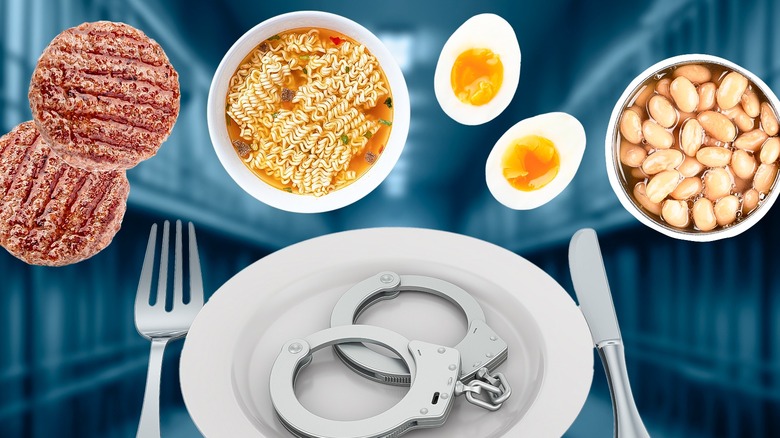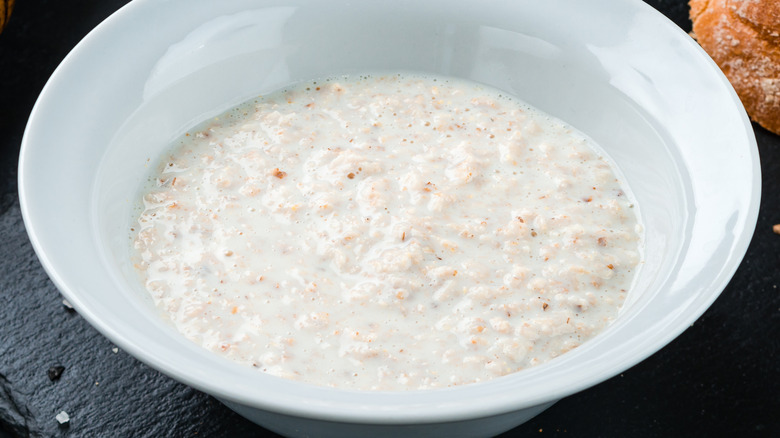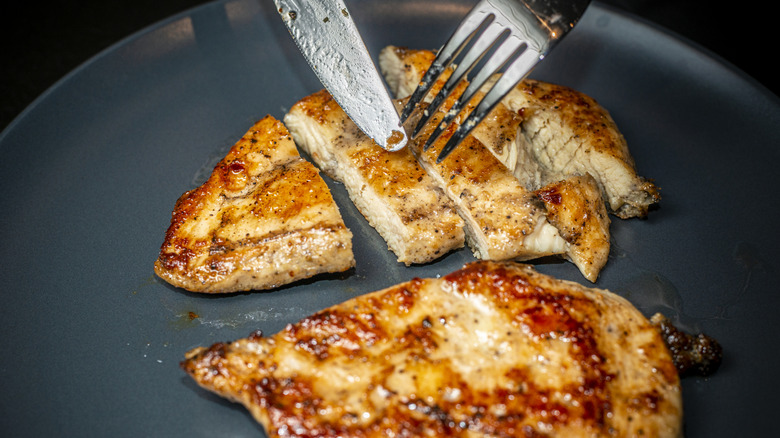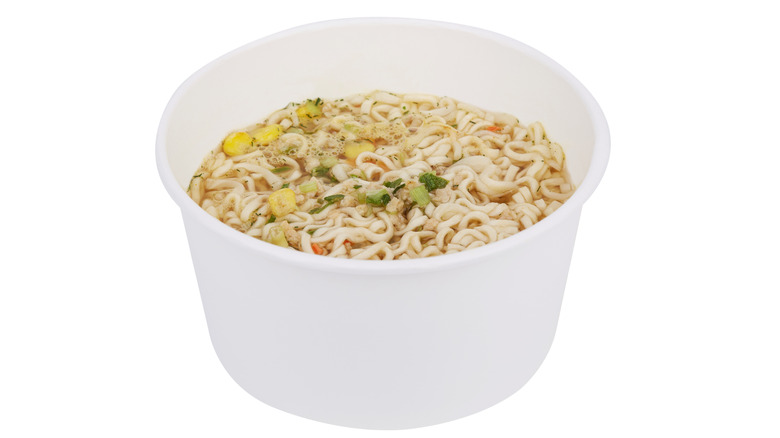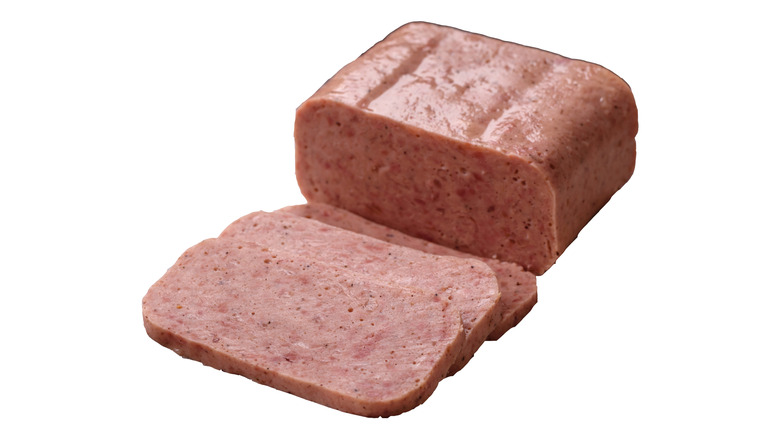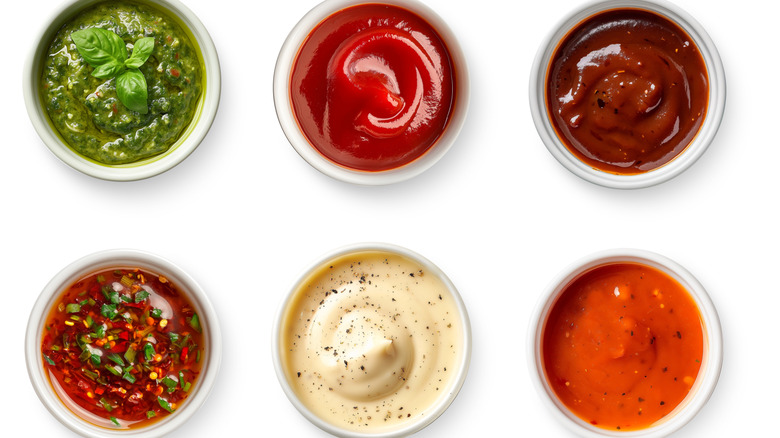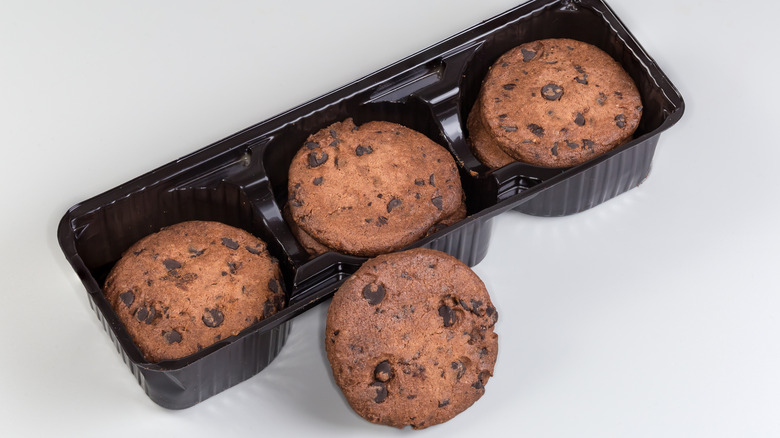When you get caught after committing a crime, you have to serve a prison sentence, which, theoretically, should be punishment enough. Still, even the food you’re offered may not up to standards, as it may not feature balanced meals, or the portion size may not be enough. While in Scandinavian countries, prisons famously make sure their populations are served nutritious and delicious food, is that the case in the United States? In general population, incarcerated people typically have their meals in a “chow hall” with controlled portions. Outside of that schedule, there is a commissary where they can buy selected snacks, meds, and beauty and skin products.
Under the Standard Minimum Rules, anyone who’s serving a sentence “shall be provided by the administration at the usual hours with food of nutritional value adequate for health and strength, of wholesome quality and well prepared and served.” Is this applied in the US across its 1,566 state prisons, 98 federal prisons, and 3,116 local jails? We’ve seen reports denouncing the blandness of the (predominantly processed) food and the limited access to fresh produce. Even worse, in a 2020 report, Impact Justice stated that three out of four people were actually served spoiled items.
Per the Michigan Journal of Race and Law, the incarcerated aren’t adequately fed, but meals vary from one state to another and depend on funding. Overall, their diet seems to have little nutritional value and isn’t as varied as recommended by the US Department of Agriculture. In some places, meals are only served twice daily, 10 hours apart. Let’s take a look at some staples you can find in an American prison, as per the Federal Bureau of Prison‘s proposed rotating five-week menu, as well as a few popular commissary items — for those who can afford it.
Breakfast tray: cereal, cake or bread and jelly, coffee, milk, and fruit
A breakfast meal may consist of hot oatmeal or any dry cereal, such as bran; a single piece of cake or a whole wheat piece of bread with some jelly; a fruit, like an apple; coffee and skim milk or any milk substitute; a sugar substitute; and a pat of margarine.
At first glance, though this meal looks passable, some items aren’t exactly healthy or appetizing. Sure, although it’s the processed version of oats, oatmeal may help reduce blood glucose, cholesterol, and the risk of heart disease and diabetes. But, to make it more palatable, people who aren’t incarcerated typically consume it with chocolate and/or various nuts and fresh fruits, sprinkled with cinnamon and brown sugar or laced with honey or maple syrup.
Also, notice that it’s jelly, and not jam that is offered; the former (obviously a generic brand and not homemade) contains more sugar and less fiber. As for artificial sweeteners, they’re typically offered in prison because they’re much cheaper than actual sugar, but that doesn’t mean they don’t have possible metabolic, cardiovascular, and gastrointestinal repercussions.
Breakfast tray: boiled eggs and porridge
According to The Guardian, the Ramsey County Correctional Facility in St Paul, Minnesota, makes the effort (and actually pays more) to regularly provide fresh produce and real dairy, meat, and eggs to its 500 or so incarcerated people. As such, a breakfast meal may consist of two boiled eggs, a serving of porridge, and a cold piece of toast, to be washed down with coffee, orange juice, and/or real milk.
Though they only have 77 calories per serving, hard-boiled eggs can be quite filling, not to mention that they contain protein, calcium, iron, and potassium. As for the versatile porridge (which consists of cooked cereal, whole grains, or legumes and can be turned into either a savory or a sweet dish), it’s also quite nutritious. However, it would definitely be more delicious with toppings like blueberries, raspberries, pistachios, pumpkin seeds, or granola.
While that particular facility typically prepares its food in-house, places with a larger budget primarily rely on vendors like the Keefe Supply Company, Trinity, and Aramark. The former, for instance, provides soft-pouch containers that are deemed much safer than metal items.
Lunch tray: hamburger or veggie patty with fries or baked potato
There are a lot of farfetched myths about fast food restaurants, but a plain hamburger served with a side of fries, although highly processed and loaded with sugar and fat, is still an accessible comfort meal worldwide. That option is also offered in US prisons, as well as healthier alternatives. Indeed, according to the Encyclopedia of Prisons and Correctional Facilities via Sage, federal prisons are supposed to propose heart-healthy options for main meals.
As such, lunch may consist of either a hamburger or a black bean burger with a choice of fries or a baked potato, accompanied by a tomato and/or some lettuce, sliced onions, a condiment like mustard or ketchup, a fruit, and a beverage.
It’s safe to assume the patties aren’t fully made of beef, though. Which is why once a month, the Florida Department of Corrections, for one, makes sure to serve 100% beef patties.
Lunch tray: chicken or beans with baked sweet potato
Another commonly served lunch is baked chicken (or pinto beans as a vegetarian option) with a side of baked sweet potato, some green beans, a whole wheat piece of bread, a pat of margarine, a beverage, and either a fruit or a dessert. Don’t expect the latter to be a decadent, cream-smothered black forest cake overflowing with fresh berries, though.
It’s not uncommon for US prisons to offer baked or fried chicken as a main meal protein. That type of poultry is supposed to be nourishing, but is it safe to eat, though? There was an article in the Phoenix New Time about Arizona’s Perryville prison denouncing deli meats with a funky smell quickly going bad and boxes of chicken labeled “not fit for human consumption.” The Arizona Department of Corrections denied those claims, but this wasn’t the first time that Trinity, the vendor, sparked outrage, having previously served dirty potatoes and maggot-filled dishes.
Obviously, canned chicken is a much cheaper option for the system. Plus, it has a long shelf life and is lower in calories than the freshly cooked kind. However, it’s also packed with sodium and additives, which may affect heart health.
Lunch or dinner tray: turkey rice and yellow cake
According to a report in The Frontier from 2019, the Oklahoma State Reformatory in Granite allocates $1 per meal, often relying on affordable and filling starches like bread and plain white rice. Lunch or dinner in that facility could therefore consist of eight ounces of turkey rice casserole; a half cup of vegetables (canned beans or peas might be something to expect); and a 4-by-4-inch piece of cake (usually just plain vanilla and devoid of any frosting), to be washed down with a cup of tea or a fruit-flavored beverage. So, mostly processed and bland items.
For a more appetizing dessert, prisoners sometimes have to get creative and rely on their commissary money. Per the A&E documentary series “60 Days In” (via Business Insider), on special occasions, the inmates at the Clark County Jail in Jeffersonville, Indiana sometimes manage to whip up a “jail cake.” That’s the best they can do with a microwave, some peanut butter cookies, a pack of Reese’s Peanut Butter Cups, a Hershey’s bar, peanut butter, and a cappuccino mix.
Dinner tray: potato soup, salad, and beets
In our normal daily life, soup is our go-to comfort meal when the weather gets chilly or we have the flu, as long as we make sure it’s packed with flavor and filled with diverse ingredients. When you’re locked up in a facility, you may not have that luxury, and soup is typically either directly poured from a can or concocted from leftovers. Fresh veggies may occasionally be used, too, especially if there’s a greenhouse or a farm onsite where those with a green thumb are allowed to grow ingredients like potatoes, cabbage, okra, tomatoes, turnips, corn, and various greens. This happens in American prisons more often than you think, as it may help manage costs (especially in larger facilities), lower depression, and provide fresh produce.
A dinner meal can thus consist of a cream of potato soup, a chef salad (or a tofu chef salad as a vegetarian alternative), some cold beets, a piece of whole wheat bread, and a beverage. Beets, for one, are low in calories and are said to have multiple health benefits, such as improving digestion and countering inflammation.
Dinner tray: pizza or beans and pasta
Speaking of entrees that wouldn’t put a dent in a prison or a correctional facility’s budget and are quite easy to prepare on a regular basis, pizza and pasta are a safe bet. Some meals even feature both, such as the following dinner menu: a choice of cheesy pizza or navy beans, pasta cooked in marinara sauce, a garden salad, and a beverage.
Obviously, it’s not like those who are incarcerated are presented with a wide array of toppings or a rich, flavorful sauce, but these dishes are quite filling even in their most basic form and generally beloved by most. Whether the dough is made from scratch, the tomatoes are fresh, and the cheese is processed or real is another story, though.
Some of those who have been assigned to kitchen duty put that experience to good use after their have served their sentence. Per the Washington Post, Mike Carter, who used to cook in prison, turned his life around when he became the executive chef at Down North Pizza in Philadelphia. Carter drew from his past innovative ideas when he made a dish he called “jailhouse pizza.” Since he rarely had any access to fresh basil, tomatoes, or mozzarella, he relied on precooked sausages, cheesy crackers, ramen noodles, and barbecue sauce.
Dinner tray: sausage or lentils and roasted potatoes
Another dinner meal offered on a regular basis in American prisons is a choice between a pork-based Italian sausage (or any other type of sausage) or lentil stew, as well as oven-roasted brown potatoes, diced peppers and onions, other mixed veggies, a whole wheat hotdog bun, and a beverage.
An Italian sausage differs from a regular breakfast sausage, as it’s typically larger and made with ground pork, garlic, paprika, anise, and/or fennel. On the plus side, it’s a good source of protein, vitamin D, iron, and potassium. Nevertheless, it’s also loaded with sodium, cholesterol, and saturated fats.
As for lentils, which are also budget-friendly, they certainly seem like the healthier alternative, given their iron, folate, and vitamin B1 content, which may help promote heart health and keep the inmates’ cholesterol and blood pressure in check.
Commissary: ramen noodles
The grass is always greener at the canteen or prison commissary. This is where the incarcerated people who have some money can purchase precious items to brighten up their days, from stamps for their handwritten letters to candy, soda cans, over-the-counter meds, and hygiene products. And on that regulated list, there’s an item that reigns supreme and is sometimes used as currency instead of cigarettes: instant ramen.
Spanning flavors like Texas beef, chicken, and Cajun shrimp, these tasty comfort noodles, especially when they’re packaged in a handy plastic or foam cup, are easy and fast to prepare. All you require is boiling water and this dish will be ready in a just few minutes. Across US prisons, a packet can be priced between $0.24 cents and $1.06, per the Fines and Fees Justice Center, whereas it may only cost $0.35 at Target. Generally, prices differ between states and facilities within the same state, but they’re generally higher than market prices. In Arkansas prisons, for instance, the same brand of chicken-flavored ramen can sells for $0.29 and $0.49.
Still, while ramen is a popular comfort food and fun to slurp on inside and outside prison, it also contains a lot of sodium and lacks basic nutrients. Its excessive consumption may even be linked to stomach cancer, heart disease, and stroke.
Commissary: Spam
Another item you can find at the commissary is luncheon meat, especially Spam, which costs about $1.45. Not only does it have a long shelf life, but it also comes in many flavors, from hickory smoke to teriyaki, jalapeño, and maple. Packed in a metal can and covered in a thin layer of gelatin, this precooked food has been receiving mixed reviews since the last days of the Great Depression. That’s because it can’t be considered a healthy food, given that it basically consists of processed pork shoulder and ham and holds a high sodium and fat content.
Yet, it’s very tasty and versatile. Inmates can snack on it plain, slap some slices on bread with whatever condiment they have on hand, or even prepare it with white rice. The latter of which is another popular food offered at the canteen.
Commissary: condiments
Basic, plain condiments like ketchup and mustard are usually offered in the chow hall to make up for all that bland and mediocre food, but, obviously, incarcerated people would likely much rather get their hands on a wider and more flavorful variety.
The commissary at prison facilities, such as the U.S. Penitentiary in Atwater, California, offer some choices, from garlic chili sauce to creamy chipotle sauce, sweet soy glaze, cream cheese squeeze, yellow chili peppers, dill pickles, minced garlic and onion, and salsa verde. On average, individual prices can range from $0.55 to $3.80.
All of these store-bought condiments may be adding some zing into meals and snacks across U.S. prisons, but their excessive consumption isn’t recommended. Indeed, they contain a lot of sugar, salt, and artificial colors and flavors, hence their link to obesity, hypertension, and other health issues.
Commissary: snacks, cookies, and nuts
There are three other coveted sections in the canteen that may not offer a wide variety of items, but they do cover popular brands of prepackaged savory and sweet foods that prisoners can enjoy in between meals. The U.S. Penitentiary in Atwater, California’s “chips” list, for instance, includes plain tortillas, spicy nachos, and pork rinds, with prices that range from $1.40 to $3.60.
Under “cookies and crackers,” you can find vanilla wafers, saltines, and chocolate chip cookies, and prices vary from $1 to $4.15. As for “snacks and nuts,” they include granola bars (a filling meal substitute), smoked almonds, mixed nuts, and a dark chocolate and nut mix. For these foods, inmates have to pay between $1.10 and $3.45.
Finally, some of the goodies purchased at the canteen can be combined creatively to whip up a makeshift treat, especially if there’s a special occasion, such as a birthday or an early release. For example, a no-bake “cheesecake” can be made from lemon juice, graham crackers, and coffee creamer, while “tamales” can be created with hot sauce, hot water, Fritos, and hot Cheetos.
The dreaded nutraloaf
A compilation of the foods offered in American prisons wouldn’t be complete without the mention of the infamous nutraloaf. Served in some facilities as a form of punishment for misbehaving inmates, it typically consists of leftover bread, beans, potatoes, cheese substitute, fruits, and vegetables, mashed together and baked in a loaf pan. Another version is made from carrots, cabbage, milk, rice, beans, potatoes, and oatmeal. Either way, the end result is a messy brownish lump that doesn’t look very appetizing.
In fact, per the University of Minnesota, the nutraloaf may be considered a violation of the Eighth Amendment, which states, “Excessive bail shall not be required, nor excessive fines imposed, nor cruel and unusual punishments inflicted.”
Indeed, prisoners who have to endure this type of diet for several days, weeks, and, sometimes, months, may suffer dire health consequences that include distress, gastrointestinal bleeding, weight loss, diarrhea, and vomiting.
This post was originally published on this site be sure to check out more of their content.




